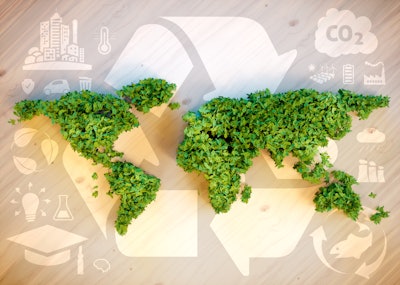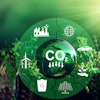
Today, sustainability means a lot more than just going green, especially in the supply chain. “People, Planet, Profit” is a new phrase in the industry that exhibits the framework needed to create a reliable and sustainable supply chain. It shows that the focus of this supply chain should be the wellbeing of its people and the planet while still maintaining profit. But to look for the cheapest ways to cut costs is a detriment to a sustainable supply chain and is the cause for many of the disruptions we see today.
Much of the turmoil in the current supply chain are related to natural disasters, many of which can be attributed to climate change. But it is not just the disruptions and the current supply chain crisis insisting on a new way of doing business, consumers and governments demand reform. Consumer facing business, who rely on supply chains to do business, see pressure from consumers and governments alike to provide more transparency and greater sustainable practices from both an ecological and social ethics standpoint.
“Consumers and government organizations are demanding transparency, regulators are penalizing them for failing environmental, social, and governance compliance and sustainability pioneers are exerting moral pressure on them,” says Shameek Ghosh, CEO and co-founder of TrusTrace. “This is giving sleepless nights to the C-suite and the boards. Companies must have a scalable and trusted way to collect and validate environmental, social and governance (ESG) data from all tiers of the supply chain and verify material integrity claims.”
Research from NYU Stern, Center for Sustainable Business, shows products that were marketed as sustainable made up more than half (54%) of the consumer-packaged goods (CPG) growth in 2019 but showed continued growth throughout the pandemic last year. Sustainability-marketed products grew 7.1 times faster than those not promoted as such.
Retailers, brands and members throughout the supply chain are now held accountable for their procurement decisions. No longer is it acceptable to be unaware of how your partners conduct business, ecologically and ethically. Journalists, media and consumers are now armed with investigative tools that allow them to uncover the truth within the supply chain.
Due to the growth of digital platforms, the companies that follow positive procurement practices can prove this through visibility platforms, adds DeepStream CEO and co-founder Jack Macfarlane.
“Companies have a social responsibility to implement an inclusive procurement strategy in order to ensure sustainable decisions are being made,” he says. “To make our supply chains more climate-friendly, we must diversify our logistics processes. Diversity is a word with heavy connotations in popular culture, and for good reason. Ultimately, it’s a positive word - diverse workforce, diverse diet, diverse experiences - these are all things to be encouraged and with proven benefits.
“This is no different from having a diverse supply chain. It breeds a healthily competitive environment that encourages suppliers to deliver the best results. Buyers are also able to resource smarter - choosing the right suppliers based on deliverables rather than relationships.”
The ability to create a sustainable supply chain relies on companies within the industry asking themselves questions to ensure they follow the right path.
According to Jeremy Tancredi, a partner in operations excellence/supply chain at West Monroe, the questions to ask are:
- Are we employing sustainable practices in the manufacturing and distribution of products?
- How can we innovate around sustainable practices in the industry?
- Is our supply base producing our materials in a sustainable manner?
- Are there alternative sources of supply that can serve our needs in a more sustainable manner?
- How can we offset less sustainable practices, both directly and indirectly?
In regard to creating an ethically sustainable supply chain, companies need to work across the value chain to ensure suppliers are treated in a fair and equitable manner, the suppliers exhibit similar ESG and ethical labor practice values and that there is a solid understanding of where the materials are sourced that create the products.
In terms of a sustainable supply chain, the most common goal currently is to cut carbon footprints. Numerous companies in the past few years, even during the pandemic, vowed to go carbon neutral within a certain timeframe, including Maersk, Apple, FedEx, Amazon, Walmart, Delta and General Motors. A report from the Washington Post in March 2021 counted more than 50 major companies made the promise to hit carbon neutrality by the year 2040. Since then, various others stepped up as well.
Many experts rely on the promise of technology to help bridge the gap to create a sustainable supply chain. Where outdated mechanics traditionally held control, ones that produce harmful greenhouse gases and disruptions in the supply chain, and cumbersome paper trails lie, technology can fit in and drive optimization.
Believing is seeing
Visibility is an increasingly important part of technology in the supply chain that can help end the crisis and create a strong, sustainable supply chain.
“Brands’ supply chains are shrouded in darkness,” says to Steve Statler, marketing SVP at Wiliot. “When brands can’t see their inventory past the shipping dock, it’s hard to regulate production when disruption and fluctuations occur. With lack of visibility comes over production and inefficient delivery routes. Even then, out of stock effects can develop with secondary over ordering.
“In hospitals, shortages of products frequently sit next door to surpluses. That can be avoided in part if brands have continuous visibility into supply chains. Often the auto-ID solutions designed to address these issues rely on manual tapping and scanning or costly scanning tunnels. When low-cost Bluetooth devices are deployed to read tags, the scanning can become automated such that human intervention isn’t required and processes can move along more efficiently.”
Traceability solutions can help companies access new markets, reduce liability costs, improve recall efficiencies, reduce product waste, enhance consumer confidence and be more resilient, adds Ghosh.
Logistics and warehousing companies can tap modern reusable equipment such as plastic pallets that tap into the Internet of Things, providing detailed information to help tracking, tracing and visibility. These modern innovations bring a technological advancement to the industry while also keeping carbon footprints and waste down through its sustainability creation.
Re-shore the supply chain
One of the most common strategies the industry looks to in the fight to go sustainable is to re-shore or near-shore the supply chain.
As evidenced in today’s current crisis, the widespread strategy of globalization not only drives emissions and waste but also creates significant room for failures throughout the chain. Many experts now ask, is it time to re-shore the supply chain and how can it be done?
Well, for one, Statler believes innovation will help.
“Recent supply chain disruptions have justified bringing home or near to home the places for production,” he says. “We also see trends to advanced automation amongst our customers. This makes the general trends to nearshoring a viable response to the issues of long-range shipping and remote facilities that are hard to manage.”
Near-shoring can certainly be the answer to solving much of the supply chains issues today. But according to Kevin Dooley, chief scientist of the Sustainability Consortium, it is a lot easier said than done. For instance, while there are cotton farms in Arizona, more than meets the eye is involved to create a completely localized apparel business. There are numerous final manufacturing factories in the state that cut and sew the final design, but the fabric production and dyeing capabilities would need to be off loaded to outside the area.
Due to the outstretched nature of the supply chain, even when near shoring operations, partnerships need to be thoroughly scrutinized. Companies need to look beyond their direct vendors and evaluate their vendors’ vendors in the name sustainability. Allan Dow, President of Logility, explains that partners need to look at proximity to markets, raw material sources, nearness to key suppliers and other partners, labor issues, infrastructure, disruption risk, and regulations, among other issues to be sure near shoring is sustainable for your business and create a more resilient business plan.
What is green washing?
Unfortunately, as with many other consumer interests and values, some organizations make misleading claims in the effort to appear sustainable and ecofriendly without backing anything up. A lack of visibility into the thick of supply chains allowed this to take place over time, but the increase in traceability and consumer interest in knowledge will likely put an end to this.
“In an increasingly global and competitive consumer market, some companies have leveraged misleading green credentials as a differentiator for an increasingly environmentally conscious customer base,” says Tancredi. “A historical lack of operational visibility and regulatory oversight meant that these credentials were often nebulously defined and rarely realized to the advertised potential.
“However, there has been an increase in sustainability investments. First there has been an increase in the willingness from legislators to govern these practices, set sustainability targets, and back them up with tax and economic benefits/penalties. Second, increased social consciousness and pressure from consumers makes the upside from investment more attractive than the potential blowback from failure.
“With access to more information than ever before, consumers are interested in understanding the source of their goods. Failing to address this market can result in a decreased ability to compete.”
In the past, it was difficult for brands to create a system to verify information in their supply chains, no matter how much the company values sustainability on an internal level.
The increase in visibility in the supply chain means a need for more data, which is likely the pillar for the supply chain of the future.
“Sustainability is nearly impossible in the enterprise without the right technology in place,” says Tancredi. “These digital solutions are what collect, distill, and automate the staggering amounts of data created in the network and allow organizations to make informed decisions about their supply chain practices. Further, these capabilities are critical to prove that your sustainability goals are truly being achieved, not just given lip service.”
Data can help pinpoint where unsafe and un-sustainably made products slip through the cracks and isolate the source, adds Ghosh.
In addition to data, the future of a sustainable supply chain relies on collaboration.
“The future of sustainable supply chains will involve a collective approach that includes public authorities at all levels of governance, private sector actors across the value chain, non-governmental organizations, social partners, academics and citizens,” says Ghosh. “Global leading brands have already started building comprehensive sustainability strategies based on stakeholder feedback, governed by senior leaders, and solid management systems — and will continue to do so. The key targets that these brands will strive for include important variables such as environmental footprint, carbon emissions, water usage, customer communication, internal transparency, regulatory requirements, minimum wage, workers safety, etc.
“While the implementation of such advanced level strategies might seem daunting, they will also present encouraging opportunities to solve issues and build future proof businesses. We will see more and more brands bridge the gap between themselves and consumers and accelerate the adoption of sustainable practices. A shift to a fully sustainable supply chain can bring environmental, health and social benefits, offer economic gains and ensure resilience in times of crisis.”
The more we embrace sustainable solutions, the more resilient we become. The supply chain crisis we are currently in exhibits the needs to do so. It will help people, the planet and your profits.


















